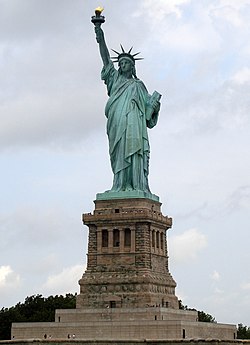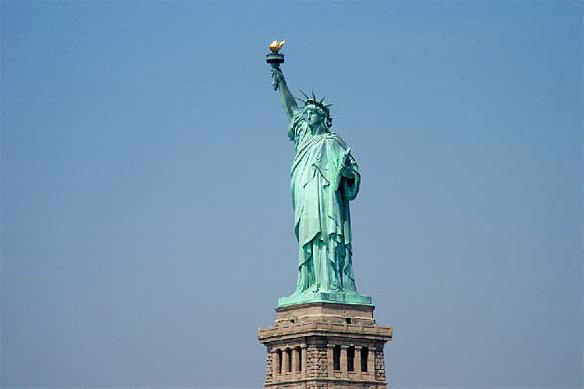
Whether it is the evening news or news spots or commercials, you can find the statue of Lady Liberty flashing on our television screens.Lady Liberty has always been and will continue to be the very essence of American freedom.How exactly have Americans at different times and under different circumstances interpreted Lady Liberty? How well do they know her and know the exact meaning of freedom symbolized by her.To know all this, it is essential going to the roots and origin of the statue of Lady Liberty.Women have always been used to portray opportunities, virtues and traits much before Lady Liberty established herself at the New York Harbor or Lady Freedom was placed on the US Capitol.America, the untamed New World was essentially symbolized as a stern Native American woman Indian Queen, dressed in finery including head feathers.She sat majestically sporting a tomahawk and sitting on a giant armadillo, representing adventure, danger and exoticism, which were major attributes associated with the exciting new land, especially for the colonial period explorers.Late colonial period saw the voluptuous and savage Indian Queen being replaced by a tamer image.The barefoot and tawny Indian Princess faced competition from the Greek goddess emblems originating from the classical architecture and art from European schools.The feathered Indian Queen gradually transformed to an alluring Greek goddess, who represented the essence of what America, the New World wanted to be.Wearing sandals that are high laced and wrapped in a toga, this Greek goddess either sported a liberty pole, offering food to a bald eagle, standing next to a George Washington statue or propping a United States shield.During the early years, space was shared by the Indian Queen and the Plumed Greek Goddess.Gradually, different versions of the female freedom figure emerged.A popular United States icon and Christopher Columbus' female counterpart Columbia appeared frequently carrying the liberty pole and cap with stripes and stars of America.She had a kind face and was dressed in classical robes minus the plumed feathers.Many other artist portrayed forms followed Columbia.There was a merging of other Greek representations such as the Goddess of Liberty and the Goddess of Wisdom, Minerva.Goddess of Liberty became more Americanized and the present version of this statue incorporates one among the American personifications that were frequently portrayed.Lady Liberty, draped in classical attire, hair flowing behind her and carrying the liberty pole became the obvious choice of emblem on the US half-cent and one cent coins.At the House of Representatives, a Liberty and the Eagle statue made of plaster was placed behind the chair of the speaker.Each and every one of these images contributed to the Lady Liberty statue version we find today.You can find an allusion to the Colossus of Rhodes headgear in the sun-ray spiked helmet crowned on the Statue of Liberty.Colossus of Rhodes is the monument to Helios, the Sun God who is standing in the Greek harbor.The statue of Liberty has a torch in her hand and wears a gown that folds around resembling the traditional Greek toga.Ringed around her head, you can find a circle of stars.In her left hand she carries a shield and a laurel wreath and a sword on her right hand.

No comments:
Post a Comment